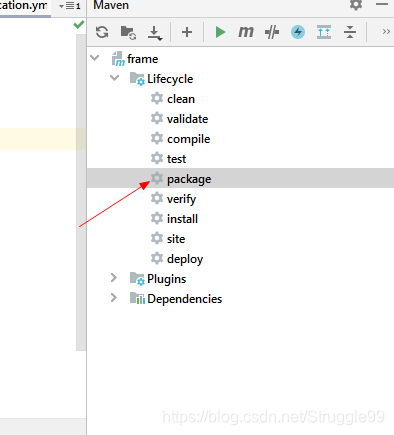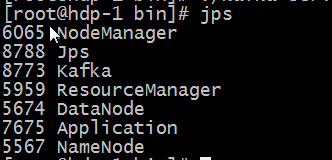社区微信群开通啦,扫一扫抢先加入社区官方微信群

社区微信群
社区微信群开通啦,扫一扫抢先加入社区官方微信群

社区微信群



运行成功
特别注意配置文件
#user nobody;
worker_processes 1;
#error_log logs/error.log;
#error_log logs/error.log notice;
#error_log logs/error.log info;
#pid logs/nginx.pid;
events {
worker_connections 1024;
}
http {
include mime.types;
default_type application/octet-stream;
log_format main '$remote_addr';
#access_log logs/access.log main;
sendfile on;
#tcp_nopush on;
#keepalive_timeout 0;
keepalive_timeout 65;
#gzip on;
upstream frame-tomcat {
#h指明nginx转发地址
server hdp-2:8385 ;
}
server {
listen 80;
#nginx服务地址
server_name hdp-1;
#charset koi8-r;
#h输出生成的日志文件的路径和格式
access_log logs/log.frame.access.log main;
location / {
# root html;
# index index.html index.htm;
proxy_pass http://frame-tomcat;
}
error_page 500 502 503 504 /50x.html;
location = /50x.html {
root html;
}
}
server {
listen 80;
server_name localhost;
#charset koi8-r;
#access_log logs/host.access.log main;
location / {
root html;
index index.html index.htm;
}
#error_page 404 /404.html;
# redirect server error pages to the static page /50x.html
#
error_page 500 502 503 504 /50x.html;
location = /50x.html {
root html;
}
# proxy the PHP scripts to Apache listening on 127.0.0.1:80
#
#location ~ .php$ {
# proxy_pass http://127.0.0.1;
#}
# pass the PHP scripts to FastCGI server listening on 127.0.0.1:9000
#
#location ~ .php$ {
# root html;
# fastcgi_pass 127.0.0.1:9000;
# fastcgi_index index.php;
# fastcgi_param SCRIPT_FILENAME /scripts$fastcgi_script_name;
# include fastcgi_params;
#}
# deny access to .htaccess files, if Apache's document root
# concurs with nginx's one
#
#location ~ /.ht {
# deny all;
#}
}
# another virtual host using mix of IP-, name-, and port-based configuration
#
#server {
# listen 8000;
# listen somename:8080;
# server_name somename alias another.alias;
# location / {
# root html;
# index index.html index.htm;
# }
#}
# HTTPS server
#
#server {
# listen 443;
# server_name localhost;
# ssl on;
# ssl_certificate cert.pem;
# ssl_certificate_key cert.key;
# ssl_session_timeout 5m;
# ssl_protocols SSLv2 SSLv3 TLSv1;
# ssl_ciphers HIGH:!aNULL:!MD5;
# ssl_prefer_server_ciphers on;
# location / {
# root html;
# index index.html index.htm;
# }
#}
}
启动kafka命令:./kafka-server-start.sh -daemon ../config/server.properties
启动成功
特别注意配置文件
a1.sources = source1
a1.sinks = k1
a1.channels = c1
# 指明数据源来自于一个可执行文件
a1.sources.source1.type = exec
# 可执行指令,跟踪一个文件的内容
a1.sources.source1.command = tail -F /usr/local/nginx/logs/log.frame.access.log
# Describe the sink
# 指明下沉到kafka的类型
a1.sinks.k1.type = org.apache.flume.sink.kafka.KafkaSink
a1.sinks.k1.topic = aaa
a1.sinks.k1.brokerList = hdp-1:9092, hdp-2:9092, hdp-3:9092
a1.sinks.k1.requiredAcks = 1
a1.sinks.k1.batchSize = 20
a1.sinks.k1.channel = c1
# Use a channel which buffers events in memory
a1.channels.c1.type = memory
a1.channels.c1.capacity = 1000
a1.channels.c1.transactionCapacity = 100
# Bind the source and sink to the channel
a1.sources.source1.channels = c1
a1.sinks.k1.channel = c1
启动flume
命令:./flume-ng agent -C ../conf/ -f ../tail-kafka.conf -n a1 -Dflume.root.logger=INFO,console
此时可tail -F log.frame.access.log 查看是否监听到日志
点击项目时文件会发生变化表示监听成功(同时flume也会发生变化)
package com.zpark.kafkatest.one;
import org.apache.hadoop.conf.Configuration;
import org.apache.hadoop.fs.FSDataOutputStream;
import org.apache.hadoop.fs.FileSystem;
import org.apache.hadoop.fs.Path;
import org.apache.kafka.clients.consumer.ConsumerRecord;
import org.apache.kafka.clients.consumer.ConsumerRecords;
import org.apache.kafka.clients.consumer.KafkaConsumer;
import org.apache.log4j.Logger;
import java.io.BufferedWriter;
import java.io.FileOutputStream;
import java.io.OutputStreamWriter;
import java.net.URI;
import java.net.URISyntaxException;
import java.util.Collections;
import java.util.Properties;
public class ConsumerLocal {
public static void main(String[] args) {
//调用接收消息的方法
receiveMsg();
}
/**
* 获取kafka topic(aaa)上的数据
*/
private static void receiveMsg() {
// Logger logger = Logger.getLogger(ConsumerLocal.class);
Properties properties = new Properties();
properties.put("bootstrap.servers", "hdp-2:9092");
properties.put("key.deserializer", "org.apache.kafka.common.serialization.StringDeserializer");
properties.put("value.deserializer", "org.apache.kafka.common.serialization.StringDeserializer");
properties.put("group.id","aaaa");
properties.put("enable.auto.commit", true);
//一个方法
KafkaConsumer<String, String> consumer = new KafkaConsumer<String, String>(properties);
consumer.subscribe(Collections.singleton("aaa"));
URI uri = null;
Configuration conf = null;
String user = "root";
try {
uri = new URI("hdfs://hdp-1:9000");
conf = new Configuration();
conf = new Configuration();
//dfs.replication:分布式文件系统副本的数量
conf.set("dfs.replication", "2");
//dfs.blocksize:分布式文件系统的块的大小 100M 64+36
conf.set("dfs.blocksize", "64m");
} catch (URISyntaxException e) {
e.printStackTrace();
}
try {
FileOutputStream fos = new FileOutputStream("D:/tmp.log");
OutputStreamWriter osw = new OutputStreamWriter(fos);
// FileSystem fs = FileSystem.get(uri, conf, user);
// FSDataOutputStream fdos = fs.create(new Path("/cf.txt"));
while(true) {
/**
* 获取kafka
*/
ConsumerRecords<String, String> records = consumer.poll(100);
for(ConsumerRecord<String, String> record: records) {
String msg =record.value()+"rn";
System.out.printf("key=%s,value=%s,offet=%s,topic=%s",record.key() , record.value() , record.offset(), record.topic());
// logger.debug(record.value());
BufferedWriter bw = new BufferedWriter(osw);
bw.write(msg);
bw.flush();
}
}
}catch (Exception e) {
e.printStackTrace();
} finally {
consumer.close();
}
}
}
此时在本地D盘会生成文件tmp.log 里面的数据即是监听到的数据
a.hive建表
create external table flumetable (ip string) row format delimited location '/usr/';
建表成功 b.上传数据至hive表中
b.上传数据至hive表中
package com.zpark.kafkatest.one;
import org.apache.hadoop.conf.Configuration;
import org.apache.hadoop.fs.FSDataOutputStream;
import org.apache.hadoop.fs.FileSystem;
import org.apache.hadoop.fs.Path;
import java.io.BufferedWriter;
import java.io.IOException;
import java.io.OutputStreamWriter;
import java.net.URI;
import java.net.URISyntaxException;
public class HdfsTest {
public static void main(String[] args) {
URI uri = null;
Configuration conf = null;
String user = "root";
FileSystem fs = null;
try {
uri = new URI("hdfs://hdp-1:9000");
conf = new Configuration();
//dfs.replication:分布式文件系统副本的数量
conf.set("dfs.replication", "2");
//dfs.blocksize:分布式文件系统的块的大小 100M 64+36
conf.set("dfs.blocksize", "64m");
fs = FileSystem.get(uri, conf, user);
fs.copyFromLocalFile(new Path("D://tmp.log"),new Path("/usr/a.txt"));
/**
* 往hdfs中写文件
*/
// FSDataOutputStream out = fs.create(new Path("/bc.txt"));
// OutputStreamWriter outWriter = new OutputStreamWriter(out);
// BufferedWriter bw = new BufferedWriter(outWriter);
// bw.write("hello");
// bw.close();
// out.close();
fs.close();
} catch (URISyntaxException e) {
e.printStackTrace();
} catch (InterruptedException e) {
e.printStackTrace();
} catch (IOException e) {
e.printStackTrace();
} finally {
}
}
}
/usr/目录下出现a.txt上传成功,此时可用hql查询
查询表数据:
select * from frametable;
 查询数据总数:
查询数据总数:select count(*) from frametable;
如果觉得我的文章对您有用,请随意打赏。你的支持将鼓励我继续创作!
